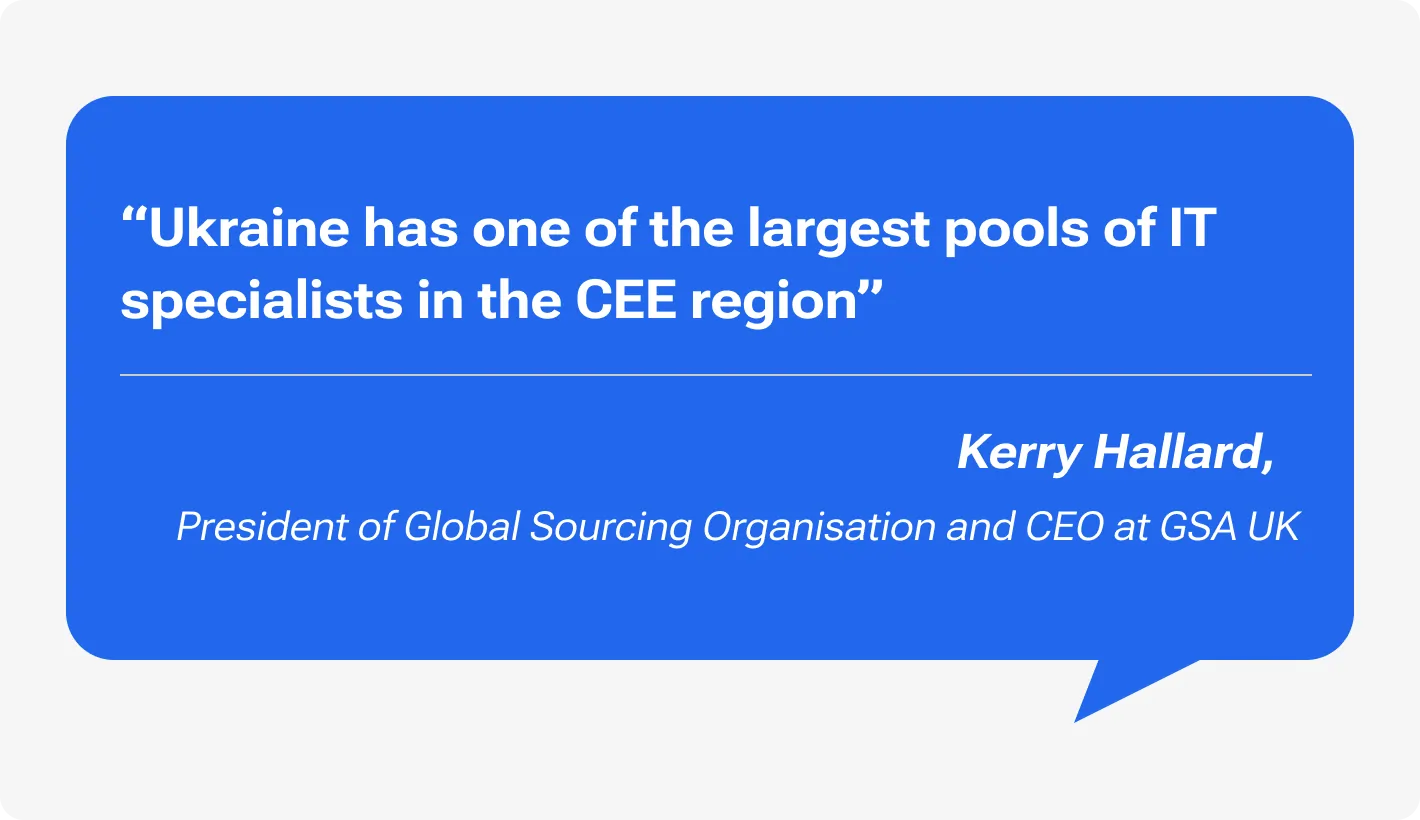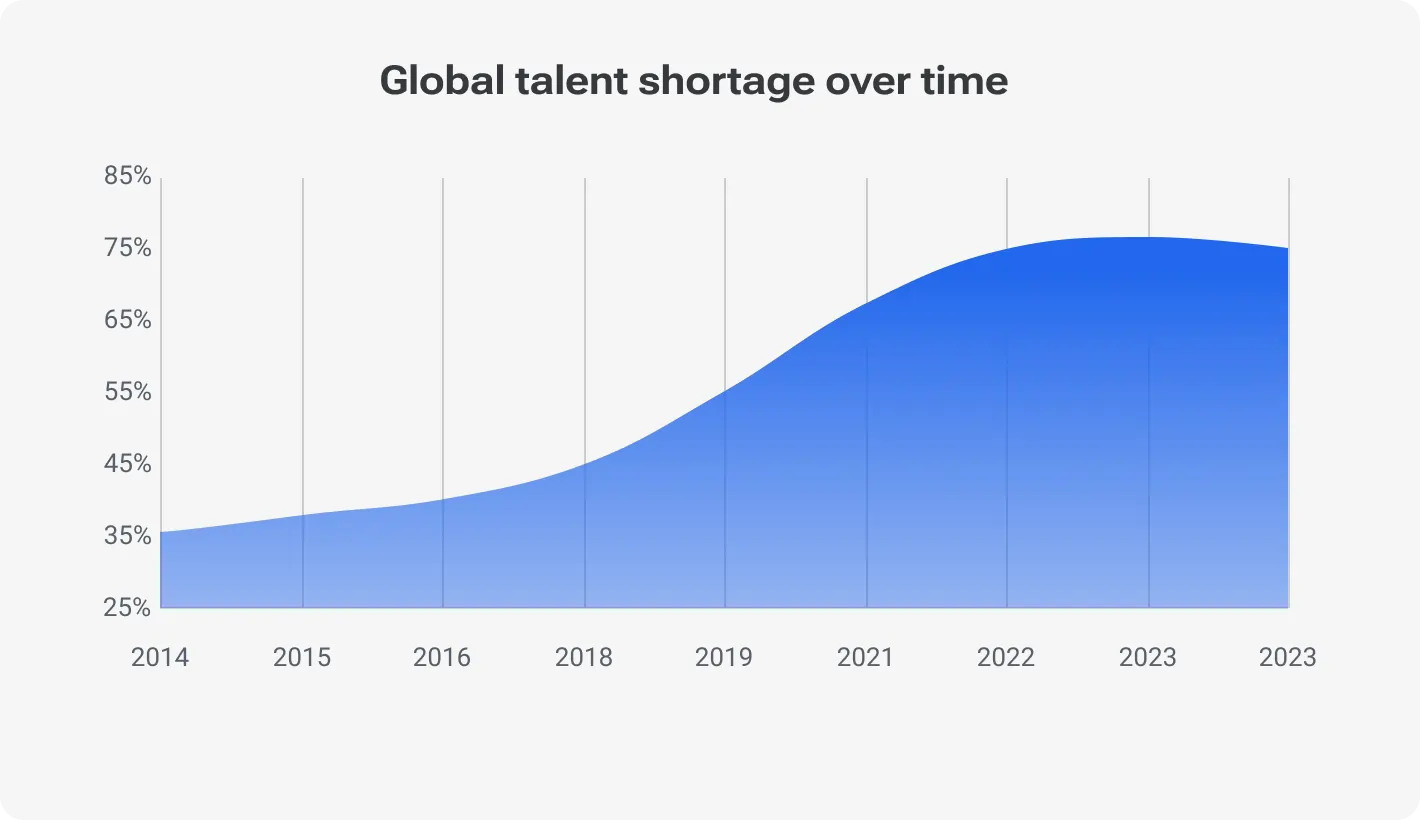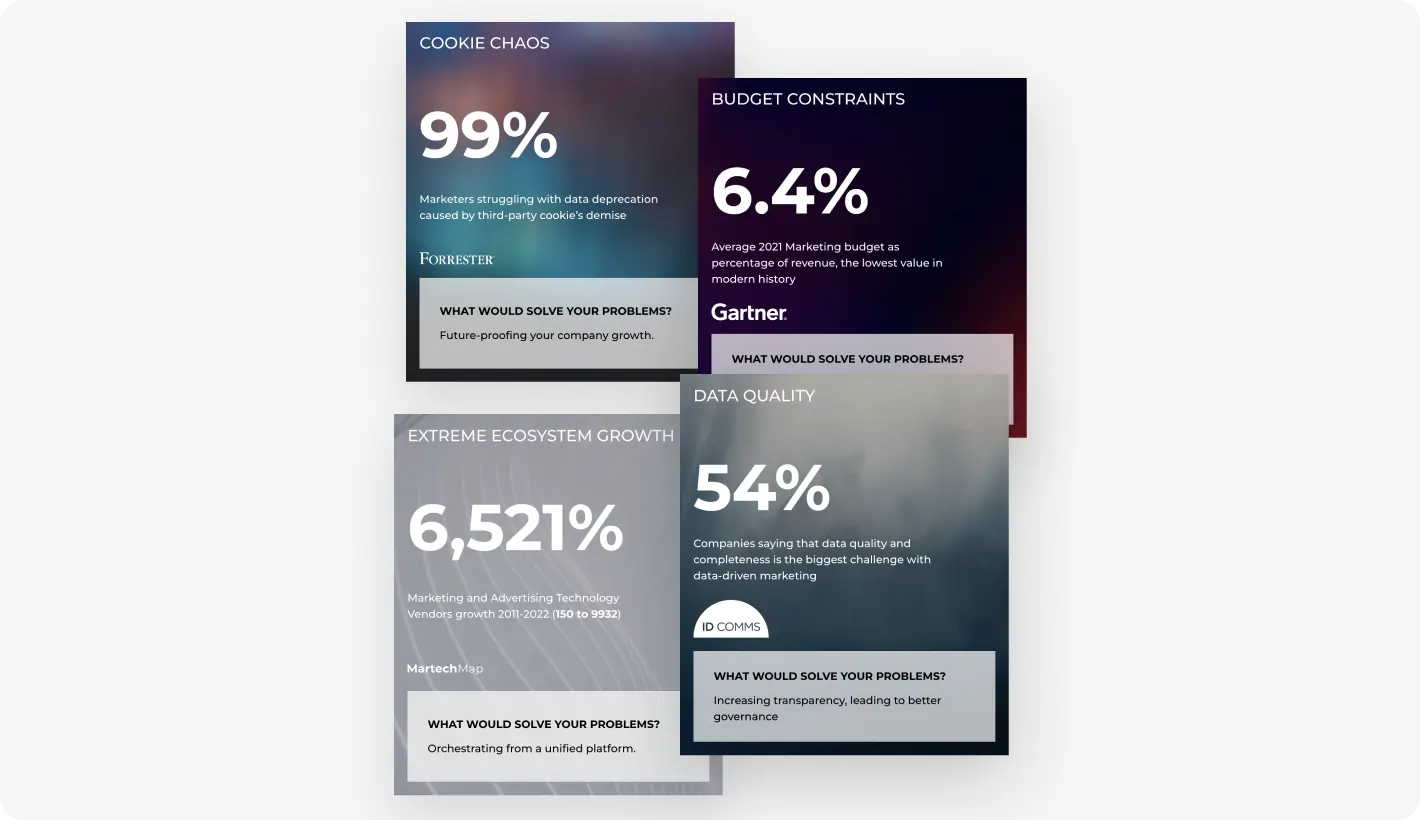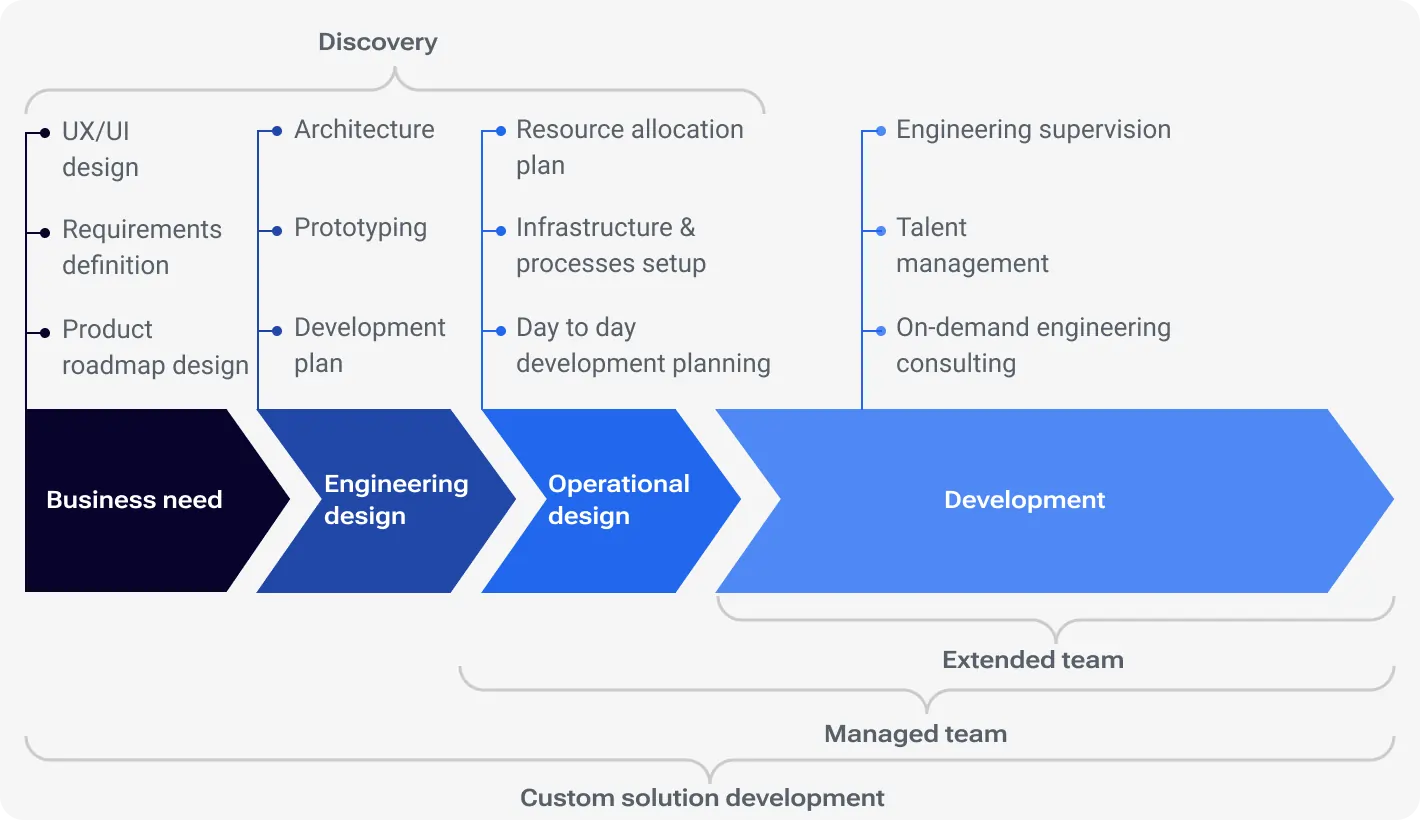Imagine building a house. You have the blueprint, the materials, and a clear vision. But you just can’t grow it from the ground yourself. Maybe you can, but it will take you half of your life. There is a need for a skilled team of carpenters, plumbers, and electricians to bring it to life. That's the situation many CEOs and IT leaders face today.
In our context, team extension is that missed construction team in the tech world. It’s often used as a long-term approach where you supplement your in-house IT team with temporary or permanent external talent. Software staff augmentation helps companies grow their teams quickly and offers flexibility and access to a global talent pool.
Among other things, team augmentation service provides:
Efficient team scale: This approach lets you scale your team up or down quickly, based on project requirements. There is no need for permanent hires when the workload subsides.
Cost-effectiveness: Hiring and training new IT staff can be expensive. Resource augmentation model is a more flexible and cost-effective solution, especially for short-term needs.
Motivated and focused experts for up to 60% less than locals, delivered in days, not months
But there is a thing. Finding skilled IT professionals is hard. ManpowerGroup has shown that 75% of U.S. employers struggle to fill jobs, especially in IT. This gap makes it tough for businesses to grow and stay competitive.
However, the need for skilled IT professionals is soaring. Gartner predicts that global IT spending will reach USD 5 trillion in 2024. Fueling this growth is the increasing demand for digital transformation initiatives across all industries.
That’s why we all get together here — to show how to use team extension effectively. We will cover expert tips, best practices, and common mistakes. Our goal is to help CEOs and C-suite executives of SMEs master tech staff augmentation.
When to consider staff augmentation
In our life, there are no one-size-fits-all solutions. Similarly, team augmentation services are best for certain situations. It is like choosing the right tool for a job — common scenarios where you can get the most out of it.
Short-term projects: When you have a project with a tight deadline, augmenting staff is probably the most relevant solution as it can quickly bring in extra hands.
Unique expertise shortage: Sometimes, a project requires skills that your team simply doesn't have. Augmentation allows you to find such experts.
Get the most of the peak times: When demand is increasing, you should strike while the iron is hot. Since team augmentation adds more members to your crew, it helps manage the extra workload without the long-term cost of new hires.
A case in point: Devico's contribution to MINT
MINT, an Italian AdTech company, has redefined media investment management with its advertising automation platform. Ahead of time, we can disclose that MINT evolved rapidly and raised investments from Tikehau Capital, which acquired a 25% stake.
The platform centralizes resources, workflows, and data. Advertisers get seamless planning, execution, and monitoring of ad campaigns. The main empowering elements are artificial intelligence and automation, which maximize efficiency and ROI alongside minimizing costs.
As we already said, machine learning algorithms optimize media campaign management in real-time. MINT caters to businesses of all sizes through three distinct solutions tailored for multinational corporations, small businesses, and micro-businesses.
This way, the platform creates a single environment where all their messages hit every target audience segment in all advertising distribution channels. Currently, the platform supports 16 channels and boasts over 350 integrations.
And well, Devico contributed to MINT’s development process and adhered to Quality Assurance best practices. We provided dedicated QA and dev teams to enhance all the processes and speed up delivery. The collaboration began with an in-depth evaluation of MINT's existing procedures to pinpoint areas for improvement. Together, we refined project workflows and documentation, ensuring clarity on task statuses and project milestones, thus boosting overall project efficiency.
Not a magic solution for everything
We can’t help but admit — staff augmentation offers numerous benefits. However, it's important to know about its limitations. Here's where it might not be the best fit.
Long-term core needs: Do you require additional staff for core IT functions like network administration or user support? In such cases, permanent hires might be a better long-term solution for building a strong internal IT team.
Company culture and integration: Integrating external staff into your company culture can take time and effort. Staff augmentation might not be ideal for roles requiring deep integration with your existing team dynamics.
Defining your needs
Logical continuation from the previous passage — for success, you need to set up clear requirements. Remember your previous vacation. If you are not the true adventurer, liking hazard Savannah, chances are you planned your trip before you actually headed off.
So, nothing groundbreaking that Aberdeen highlights: companies with a well-defined talent acquisition strategy achieve higher net income compared to those with a more casual approach. Clearly identifying the specific skill sets, experience level, and cultural fit makes a difference.
How to identify specific skill sets
Analyze the project: Look at your project's goals. Decide what tasks need extra hands. It helps you understand the skills missing in your team.
Future-proof skills: take into account both current needs and future trends (when the project scales). For example, if you're working on web development, knowledge of progressive web apps might be valuable.
Skill level: Honestly, you should have some level of understanding to figure out the level of expertise you need from augmented staff. It may be a junior developer to handle routine tasks, a senior developer to solve complex problems, it may be anything.
Beyond technical skills
Success in technology staff augmentation goes beyond just technical know-how. Here are deeper factors to consider:
Cultural fit: Teams work best when everyone shares similar values and work ethics. For example, Deloitte found that 88% of employees believe a distinct workplace culture is important to business success. Assess if the augmented staff can blend with your team's culture.
Communication style: They say, if you can’t explain complex ideas to a 10-year-old, you understand nothing. Look for professionals who can. Google for tools like the Myers-Briggs Type Indicator. It can gauge a potential candidate's communication preferences.
Adaptability: Pivot hasn’t been canceled. You need people who can adapt to new situations without losing pace. When choosing a partner, ask for practical cases when candidates have handled change in past projects.
Choosing a partner
Selecting a staff augmentation contractor must be informed, so take into account these ideas.

Proof of expertise: Your partner needs a solid track record in your industry or with similar projects. Famous platform Clutch has a dip in credibility (now at about 40% in the US according to SEMRUSH), however, it still remains useful. Filter companies by industry, location, and expertise to select the shortlist of candidates. Also, consider if your project needs knowledge of local "circumstances", like dating or food delivery apps.
Cultural compatibility: Clutch may not cover this, but other tools do. Hofstede Insights, for instance, can spot potential cultural differences through a research-based approach and special analyzing features. Intro meetings can also help bridge any gaps.
Communication style: Good communication is key to success with offshore development. Check their responsiveness and language skills. Use the EF English Proficiency Index as a first-stage beacon. And get to the same page on the comms tools they use — preferably to share the same vision on this matter.
Security measures: Your partner must protect your data and intellectual property. Look for security certifications like ISO 27001. This shows they follow high standards for information security management.

Technical nuances: Consider the technical environment of the outsourcing location. Internet adoption and cost can impact your project. For instance, Ukraine offers one of the cheapest Internet costs for 100 Mbps.
Services offered: We understand that there is an overchoice problem. And there were many experiments proving that. But still, you should look for providers that offer more services. That’ll be your reference point. If your resource and staff augmentation provider helps with onboarding, training, and support, you got it.
Pricing and flexibility: Without any hesitation — get rid of any service provider that has hidden costs. As soon as you notice such confusion, do away with them. Look for transparent pricing models: flexible and able to adapt to your changing needs.
Onboarding and integration
Make the onboarding process for the augmented staff members seamless and even exciting. It’ll be completely enough to ensure the process is clear and “immersive”. But if you count on long-term partnership, you can stand out by adding gamification. However, let’s run through more conventional yet effective strategies to ensure a smooth onboarding experience.
Clear communication is key
Have constant communication about project objectives, timelines, and performance expectations with your augmented team. Take analysis as a fundament for your agenda; consider clear-cut visualization in Asana or Trello. Very common software for creating a clear roadmap of the project and promoting transparency.
Building strong bonds
Be close to every involved group of stakeholders and to augmented staff. Introduce them to each other and facilitate introductions to key stakeholders. Maybe, it’s even worth running team-building activities. Sometimes this enhances the sense of shared purpose. Ron Friedman in a Harvard Business Review article listed the most vibrant sign of high-performing teams, and team-building activities like escape rooms, voluntary community service projects, or skills-based workshops have a potential for implementation. At least, you will have fun too and, hope, won’t regret it.
Effective when equipped
Grant your augmented team members access to the tools and resources they need to perform their jobs effectively. This includes software licenses, project documentation, and communication platforms. There are some different surveys on that matter, but on average, companies allocate USD 1,200 per employee on essential software tools. Hardly sufficient data, yet still applicable.
Streamlining communication and reporting
Establish clear communication channels and reporting structures. Define preferred communication methods (email, instant messaging) and designate points of contact within your team for specific inquiries.
For clear-cut reports:
Focus on outcomes: Reports should set out key achievements and progress made against project goals.
Data-Driven insights: Utilize data and metrics to showcase the impact of your augmented team member's contributions.
Actionable recommendations: Reports should conclude with any necessary recommendations or next steps to ensure project success.
Ongoing management and success
Just talk — this is the main point. Open and clear communication solves more problems than you can even expect. This way, you can ensure everyone is on the same page. Here's how to complete this unusual task with a splash.
Communication: once again pointing
Maintain open and consistent communication channels between your in-house and augmented staff. Regular team meetings (Zoom or Google Meet) and instant messaging platforms can foster collaboration and address any roadblocks promptly.
Strategies for monitoring performance
Periodical check-ins help: Schedule weekly Zooms. Align on the progress, challenges, and next steps.
Use performance analysis tools: There is nothing groundbreaking: tools like Jira (for task management), GitHub (for code review), and Tableau (data visualization) are famous and common. But you can go further and use advanced analysis tools like Toggl Track, Harvest, or Time Doctor. Simply, they also can track progress, identify areas for improvement, and ensure project milestones are met.
Set clear KPIs: Define what success looks like for each project phase. Use these indicators to measure performance.
How to build a positive work environment
Studies by Amy Edmondson at Harvard Business Review demonstrate the importance of psychological safety. A safe environment, where every person feels comfortable sharing ideas and admitting mistakes, creates miracles. You should strive for an atmosphere where everyone asks questions without fear.
Recognize achievements: Express your admiration to the united team and personalities. Every time you notice their successes, they feel motivation level-up.
Promote work-life balance: Many may say that it’s a fairy tale. However, in the long run, you simply can end up beating the dead horse. Encourage breaks and respect off-hours.
Start with positive feedback
Remember, there is a place only for constructive criticism. Focus on actions, not the person. Always end on a positive note: reiterate the team's strengths and potential for growth. 5-step structure for effective feedback:
-
Thank to team or person for their contributions.
-
Outline the actions and their consequences.
-
Offer a mix of positive reinforcement and constructive criticism to help your augmented team members continuously improve.
-
Conclude feedback sessions with clear and actionable steps for improvement, allowing your augmented team members to take ownership of their development.
-
Praise the team or person one more time.
To sum it up
Mastering staff augmentation best practices can’t be defined as an X-step scheme or plan. Yet, it always includes defining needs, selecting the right partner, smooth onboarding, and effective ongoing management within the resource augmentation model.
When done correctly, staff augmentation solutions bring about flexibility, talent thriving, and quick scaling. It transforms how projects are executed, allowing businesses to stay competitive in today’s digital landscape.
If you're looking to leverage these benefits, feel free to contact Devico’s experts. At a free 30-mins intro meeting we’ll guide you through tailoring an augmentation strategy that aligns with your business objectives and project needs.
Augment your tech teams with our developers, adding the expertise you need








